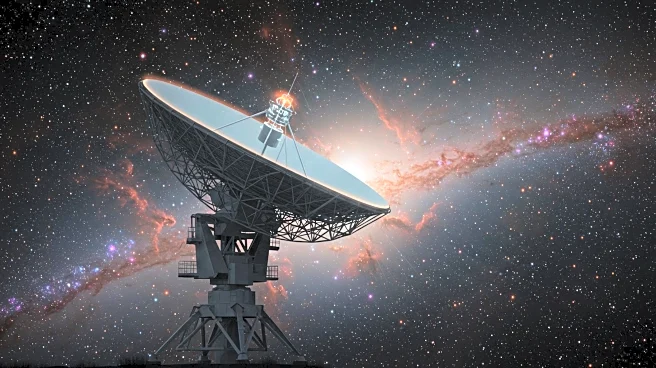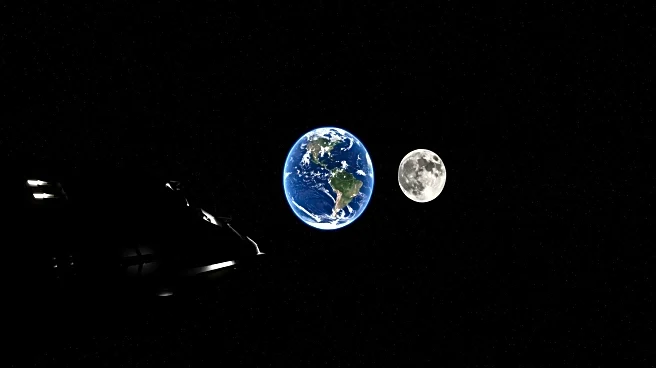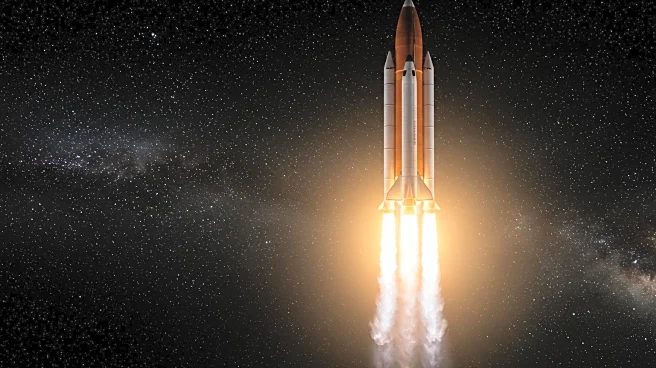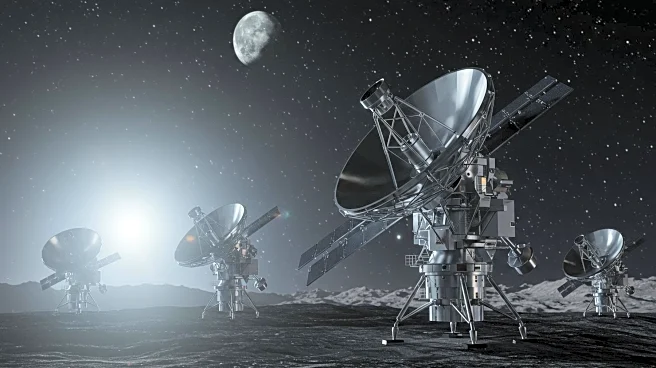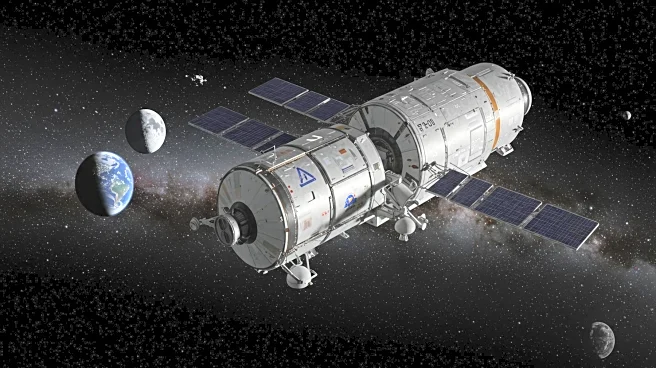What's Happening?
Researchers from Penn State and NASA's Jet Propulsion Laboratory have conducted a study to determine when and where human deep space transmissions are most detectable by extraterrestrial observers. The study, published in the Astrophysical Journal Letters, analyzed logs from NASA's Deep Space Network (DSN) to understand the timing and directionality of radio communications from Earth. The research suggests that human transmissions, primarily directed towards spacecraft near Mars, could be detected by extraterrestrial intelligence if they are positioned along the path of these interplanetary communications. The study highlights the potential for these patterns to guide the search for extraterrestrial intelligence (SETI) by focusing on alignments of planets outside our solar system.
Why It's Important?
This research is significant as it provides insights into how human communications might be detected by extraterrestrial civilizations, thereby influencing the strategies used in the search for alien technosignatures. By understanding the patterns of our own transmissions, scientists can better target their search for extraterrestrial intelligence, potentially increasing the chances of detecting alien life. The study also underscores the importance of considering the alignment of exoplanets in SETI efforts, as these alignments could enhance the detectability of technosignatures. This research could lead to more focused and efficient searches for extraterrestrial life, potentially transforming our understanding of the universe and our place within it.
What's Next?
The research team plans to identify solar systems within 23 light-years of Earth that could have received signals from our transmissions. They aim to quantify how frequently these systems could have been exposed to Earth's signals, which could refine the search for extraterrestrial intelligence. Additionally, the upcoming launch of NASA's Nancy Grace Roman Space Telescope is expected to detect a significant number of previously undetected exoplanets, expanding the potential search area for technosignatures. This could lead to new discoveries and a deeper understanding of the universe.
Beyond the Headlines
The study raises ethical and philosophical questions about humanity's role in the universe and the potential consequences of making contact with extraterrestrial civilizations. It also highlights the need for international cooperation and dialogue on the implications of such discoveries. As our technological capabilities advance, the possibility of detecting or being detected by extraterrestrial life becomes more tangible, prompting discussions on how to handle such encounters.
